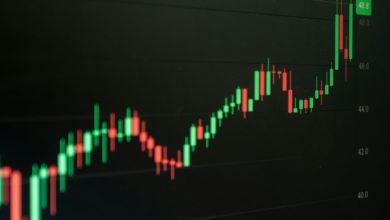Powell Signals Possible September Rate Cut, Markets React
Federal Reserve Chair Jerome Powell just opened the door for a potential rate cut in September during his speech at the Jackson Hole Economic Symposium on Friday. While stating that inflation risks remain “tilted to the upside,” Powell suggested that the central bank’s evolving policy framework and the shifting economic landscape might justify a change in interest rates. Investors interpreted this as a dovish signal, sending U.S. stock markets higher and Treasury yields lower immediately following the remarks.
The Fed has held the federal funds rate steady at 4.25%-4.50% since late July, but Powell’s comments reignite speculation that the central bank could move toward easing in the coming month. While the speech acknowledged ongoing inflation pressures, particularly from tariffs, it also highlighted the Fed’s willingness to act if economic conditions warrant, offering markets a potential path toward lower borrowing costs.
Market Implications
Investors responded positively to Powell’s remarks. According to CME Group data, the probability of a September rate cut surged past 90% following the speech. Stocks in interest rate-sensitive sectors, such as technology and consumer discretionary, led the rally, while bond yields fell as traders adjusted expectations for the cost of capital. Analysts note that even the mere possibility of a rate reduction can influence borrowing costs for businesses and consumers, potentially spurring growth in corporate earnings and retail activity.
Banks and financial institutions, however, remain cautious. Lower rates typically compress lending margins, impacting profitability for banks even as they may stimulate loan demand. The mixed market response underscores the delicate balancing act the Fed faces between supporting growth and maintaining price stability.
Economic Context
Powell’s speech emphasized that recent inflation trends are shaped by ongoing tariff-related pressures, which could materialize in higher prices in the months ahead. “We expect those effects to accumulate over [the] coming months,” Powell said, while stressing that one-time increases in the price level will not be allowed to become a persistent problem.
The broader economy remains resilient, with consumer spending steady, but signs of softening in manufacturing and housing suggest that the central bank may have room to ease. Recent economic data, including moderate wage gains and cooling commodity prices, have contributed to the debate among Fed officials about whether a rate cut could sustain growth without reigniting inflation.
Differing Fed Views
Even as Powell hinted at a potential rate cut, public statements from other Fed governors reveal a range of opinions. Governors Michelle Bowman and Chris Waller, who voted against leaving rates unchanged in July, advocate for earlier easing to support growth. Others remain cautious, emphasizing that inflation remains above the Fed’s 2% target and that premature rate cuts could undermine the central bank’s credibility.
Analysts suggest that Powell’s speech was designed to signal flexibility rather than commit to a specific policy path, leaving room for the Fed to adjust based on incoming economic data. The diversity of views within the central bank underscores the uncertainty markets face in anticipating the timing and size of any potential rate adjustments.
Looking Ahead
Investors will now turn their attention to upcoming economic reports, including inflation, retail sales, and labor market data, as they try to gauge the Fed’s next move. The Jackson Hole speech has heightened expectations for a September rate cut, but markets will be closely watching whether economic indicators justify such action.
For companies and investors, the prospect of lower borrowing costs could spur capital investment and consumer spending, particularly in sectors sensitive to interest rates. However, the Fed’s caution about persistent inflation suggests that any policy shift will be measured and data-driven. In the coming weeks, clarity on the central bank’s stance could set the tone for market trends heading into the final quarter of 2025.




